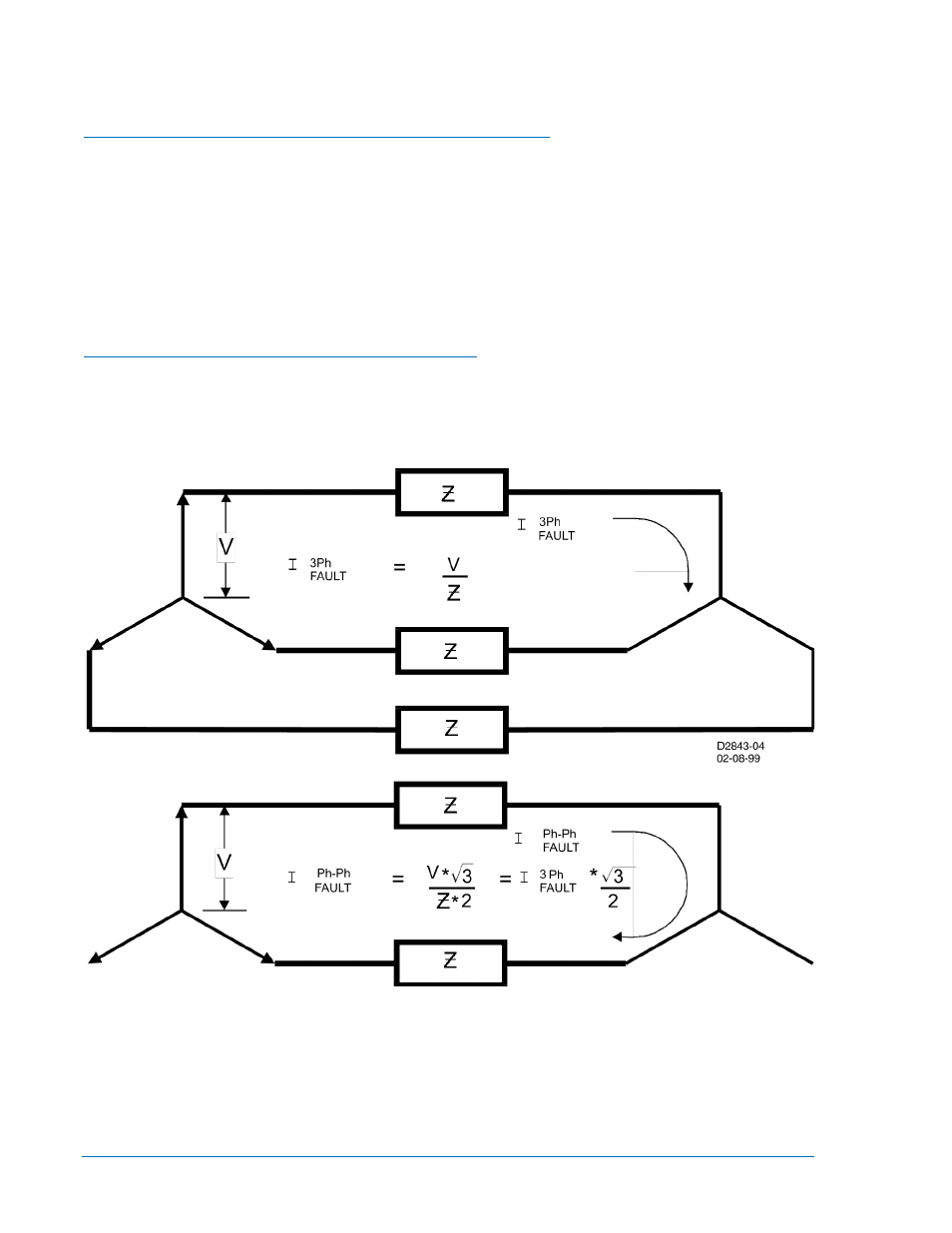Negative-sequence overcurrent protection, Pickup settings for negative-sequence overcurrent, Negative-sequence overcurrent protection -18 – Basler Electric BE1-851 User Manual
Page 74: Figure 4-16. phase-to-phase fault magnitude -18

Programmable curve coefficients can be entered regardless of the curve chosen for the protection
element. However, the programmable curve will not be enabled until P is selected as the curve for the
protective element.
Retrieving Time Overcurrent Protection Status from the Relay
The status of each logic variable cannot be determined in BESTCOMS. It can only be determined from
the ASCII command interface using the RG-STAT (report general-status) command. See Section 6,
Reporting and Alarms, General Status Reporting, for more information.
Negative-Sequence Overcurrent Protection
For years, protection engineers have enjoyed increased sensitivity to phase-to-ground unbalances with
the application of ground relays. Ground relays can be set more sensitively than phase relays because a
balanced load has no ground (3I
0
) current component. The negative-sequence elements can provide
similar increased sensitivity to phase-to-phase faults because a balanced load has no negative-sequence
(I
2
) current component.
Pickup Settings for Negative-Sequence Overcurrent
A typical setting for the negative-sequence elements might be one-half the phase pickup setting in order
to achieve equal sensitivity to phase-to-phase faults as to three-phase faults. This number comes from
the fact that the magnitude of the current for a phase-to-phase fault is √3/2 (87%) of the three-phase fault
at the same location. This is illustrated in Figure 4-16.
Figure 4-16. Phase-to-Phase Fault Magnitude
Phase-to-phase fault current is made up of both positive and negative-sequence components as shown in
Figure 4-17. For a phase-to-phase fault, the magnitude of the negative-sequence component is 1/√3
(58%) of the magnitude of the total phase current. When these two factors (√3/2 and 1/√3) are combined,
the √3 factors cancel which leaves the one-half factor.
4-18
BE1-851 Protection and Control
9289900990 Rev R